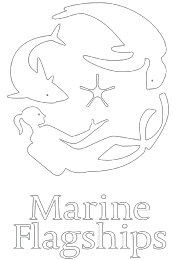Species Name
Milk Shark
Scientific Name
Rhizoprionodon acutus
Family Name
Carcharhinidae
IUCN Status
Vulnerable
Snout long, narrow with large eyes; long upper and lower labial furrows with usually more than 8 hyomandibular pores on each side of the mouth; pectoral, pelvic, anal and lower caudal fin tips pale; preanal ridges long and prominent; upper caudal fin tips sometimes dark in adults
Biology
Length: The Atlantic sharpnose shark can reach a maximum length of approximately 120 to 130 centimeters (about 3.9 to 4.3 feet).
Gestation period: ~12 months
Littter size: Viviparous, with a yolk-sac placenta; 2 to 8 in a litter
Life Expectancy: The life expectancy of the Atlantic sharpnose shark is estimated to be around 8 years in the wild.
Diet: Feeds mainly on small pelagic and benthic bony fishes, also cephalopods and other invertebrates
Habitat and Distribution
Habitat: Rhizoprionodon acutus is primarily a marine species that inhabits both coastal and offshore waters. These sharks are often found in shallow tropical and subtropical regions, including estuaries, bays, and lagoons. They tend to prefer areas with sandy or muddy bottoms but can also be found near coral reefs and rocky shorelines.
Distribution: They have a widespread distribution across various oceanic regions. They are commonly found in the Atlantic Ocean, Indian Ocean, and the western Pacific Ocean. Their range extends from the coasts of Africa and the Red Sea to the coasts of the Americas, including the Gulf of Mexico and the Caribbean Sea.
Known landing centres: Digha Mohana, Royapuram Fishing Harbour, Cuddalore Fishing Harbour, Nagapattinam Fishing Harbour, Thoothukudi, Threshpuram, Tharuvaikulam, Vembar, Vellapatti, Junglighat, Burmanallah, Wandoor, Dignabad, Cochin Fisheries Harbour, Porbandar, Mumbai (Versova, Sassoon Docks, Satpati, Naigaon, New Ferry Wharf), Okha, Porbander, Mangrol and Veraval.
Depth: The milk shark is known to occupy a wide range of depths in the water column. They can be found in waters as shallow as a few meters near the coast, and they can also venture into deeper waters. These sharks have been recorded at depths of up to around 100 meters (approximately 328 feet).
Commercial Value
It is one of the most consumed sharks in tropical and subtropical coastal waters globally. The flesh is consumed fresh or dried, salted, smoked and used as fishmeal. Fins are of limited value due to their small size although trade in small, low-value fins has increased in Southeast Asia in recent years.
Threats
The species is caught globally as a target and bycatch in industrial, small-scale, and recreational fisheries by multiple fishing gears including trawl, gillnet, trawl, hook and line, and longline. It is retained for the meat and fins.
References
- Ba, A, Diop, MS, Diatta, Y, Justine, D, and Ba, CT (2013). Diet of the milk shark, Rhizoprionodon acutus (Ruppel, 1837) (Chondrichthyes: Carcharhinidae), from the Senegalese coast. Journal of Applied Ichthyology 29, 789–795.
- Krishnamoorthi, B and Jagadis, I (1986) Biology and population dynamics of the grey dogshark, Rhizoprionodon (Rhizoprionodon) acutus (Ruppell), In Madras waters. Indian Journal of Fisheries, 33 (4). pp. 371-385.
- Mohamad Kasim, H (1991) Shark fishery of Veraval coast with special reference to population dynamics of Scoliodon laticaudus (Muller Andhenle) and Rhizoprionodon acutus (Ruppell). Journal of the Marine Biological Association of India, 33 (172). pp. 213-228
- Sen, Swatipriyanka & Chakraborty, S. & Vivekanandan, E. & Zacharia, P U & Kizhakudan, Shoba & Jaiswar, A. & Dash, Gyanaranjan & Gohel, Jayshree. (2017). Population dynamics and stock assessment of milk shark, Rhizoprionodon acutus (Ruppell, 1837) along Gujarat coast of India. Indian Journal of Geo-Marine Sciences. 46. 936-946.


Related Species
- Tiger Shark
- Silky Shark
- Blacktip Reef Shark
- Common Blacktip Shark
- Spot-tail Shark
- Spadenose Shark
- Bignose Shark
- Blackspot Shark
- Blue Shark
- Broadfin Shark
- Bull Shark
- Dusky Shark
- Ganges Shark
- Graceful Shark
- Grey Reef Shark
- Grey Sharpnose Shark
- Hardnose Shark
- Sliteye Shark
- Silvertip Shark
- Sharptooth Lemon Shark
- Sandbar Shark
- Pondicherry Shark
- Pigeye Shark
- Oceanic Whitetip Shark
- Irrawaddy River Shark
- Speartooth Shark
- Spinner Shark
- Whitecheek Shark
- Whitetip Reef Shark

